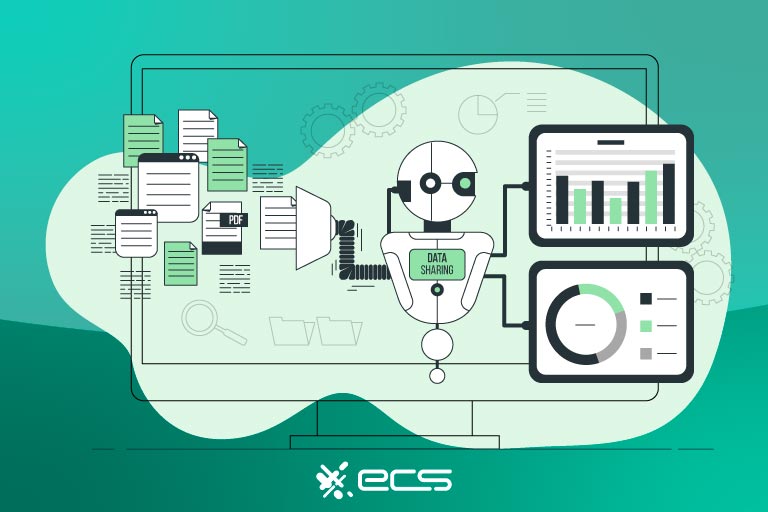Did you know there is a technology that can take repetitive, laborious, and manual processes and automate them with little to no human intervention? This payment system is called straight-through processing.
Straight-through processing (STP) speeds up businesses’ transaction processing through streamlined data sharing.
In this article, we will dissect what STP is, how it works, who can use it, and how it can benefit your business.
What Is Straight-Through Processing?
What does STP stand for? STP stands for straight-through processing. STP is simply another way of saying innovative systems for automated transaction processing. It is a great way merchants can streamline their business processes and maximize their profits.
Straight-through processing transactions use an electronic replacement of physical and paper-based financial tasks.
The goal of an STP system is to streamline financial transactions so that all procedures associated with the initiated payment follow an automated process from beginning to end. It is significantly faster than traditional methods and requires no manual intervention.
Recent studies from the Association for Financial Professionals, indicate that 47% of businesses are currently using STP to manage payments and 44% are using STP to manage receivables.
What is the Difference Between Straight Through Processing and Traditional Payment Processing?
There is a substantial difference between straight-through processing and traditional payment processing. With traditional digital payment processing, merchants use either a virtual gateway, a physical card reader, a POS system, or physical checks to collect or disburse payment.
Payments
With a physical POS system, a customer would hand the cashier their card, or they would use a customer-facing terminal to swipe (though this is more outdated than other methods), dip, or tap their card. With a virtual or online payment terminal, the merchant or customer would key in the card details manually.
These processes would occur every time a customer needed to make a payment. A caveat is if their payment information was tokenized and saved in a payment gateway, such as their go-to online shops like Amazon, SHEIN, Walmart, Chewy, etc.
Additionally, payment information can be saved and auto-entered rather than keyed through a cardholder’s mobile wallet. So rather than the eCommerce retailer’s gateway storing sensitive data, a cardholder would tokenize their credit card in their mobile wallet and simply pay by facial recognition at their favorite online retailer’s checkout page.
However, none of these payment processes include automation. Meaning recurring payments that occur without the need of a human manually entering information by keying, swiping, tapping, or dipping their card details.
Disbursements
For merchants who need to process disbursements, meaning send money to their clients-insurance agencies, for example- traditional methods would generally consider a variety of tasks.
These tasks could include paper forms, manual information collection, and a variety of departments that would work together to review, approve, and send the insured client the funds for their claim.
Again, none of these previous processes included any automation. This is where straight through processing comes into play.
How Does Straight Through Processing Work?
Straight-through processing is a technology that automates various forms of financial processing. Meaning there is no human intervention in any communication throughout the process.
Various industries utilize specific payment processes. As a result, there is no standard procedure or operation for STP. However, there are a few key technologies that STP is compiled of to allow for a smooth procedure including the following:
- Optical character recognition: A technology that enables the conversion of scanned or printed text into digital machine-encoded text. It analyzes and recognizes characters within an image and converts them into an editable and searchable digital document.
- Digital signature protocol: a set of rules and procedures used to generate, verify, approve, and manage digital signatures. It often incorporates additional security features such as time and date-stamping to prevent later tampering.
- Document routing mechanism: a system that automatically determines the routing information of a document within a company’s workflow, while complying with all organizational requirements. It involves the rules and procedures for directing a document from its source to its destination. Ensuring that it reaches the appropriate department or individual for final review, approval, or further action if needed.
- Data reconciliation: the comparison and alignment of data from different sources. It is used to identify inconsistencies or discrepancies and take the appropriate actions to reconcile the information. Ensuring data accuracy.
- Data monitoring and mapping: Captures data from multiple locations, then monitors that data in real-time to create visual representations or maps of that data. This helps organizations to detect patterns, gain insight, and make informed decisions for the future.
- Electronic payment generation: the initiation of electronic transactions to make payments electronically with no human intervention. It converts payment requests into electronic formats and transmits them to financial institutions for further processing.
How Different Industries Utilize Straight-Through Processing
In reality, any business that is looking to replace paper-based or manual payment processes with automated, digital systems that are less costly and easier to manage would benefit from straight-through processing.
Businesses in many industries can utilize STP to fast-track their transactions for invoices for accounts payable and receipts for accounts receivable. But there’s so much more that STP offers to organizations. Below are a few examples of how different industries utilize STP solutions.
Recurring Billing STP
Merchants with a recurring billing model may see the most out of STP utilization. When these businesses use a fully automated payment processing system, they can minimize their expenses. Especially those linked to individual customers.
Some examples of recurring billing businesses may include but are not limited to mortgage companies, loan providers, gyms, insurance providers, streaming services, utility providers, etc.
eCommerce STP
eCommerce merchants can utilize STP to process real-time transactions without manual intervention. Selling and receiving payment quickly is important. So eCommerce businesses can also use STP for product delivery and transaction settlement.
An example of an eCommerce business that has successfully implemented STP technology into its processes is Amazon. They have reached immense success through high-level automation. The company continues to exceed customers’ expectations with seamless transactions. Generating record-breaking revenues.
Merchants who partner with a reputable payment processor, such as ECS Payments, can easily achieve their goals.
Banking and Financial Industry STP
Prior to the 1970s, financial institutions processed payments via telegraph. After 1970, these institutions began using ACH and SWIFT for both domestic and international payment transactions.
But today, banks’ STP implementation has saved money with automated, streamlined processes to handle expedited transactions.
As an example, if a bank staffer executes many monthly payments, they may make a substantial portion of those payments incorrectly.
Resulting in return fees for any transaction that needs correction. A lack of human intervention with automated payment technology reduces such errors and charges.

Crypto Currency STP
Cryptocurrency transactions do not need to go through a financial institution. Rather, one crypto investor will transfer the funds to another investor within a distinct crypto payment infrastructure.
There is no manual intervention to seamlessly complete a crypto transfer. And with high-level STP technologies, crypto transactions see faster settlements.
Credit Underwriting STP
The process for loan underwriting can be significantly sped up and automated with the utilization of STP technology.
For example, when an application is submitted online, STP technology uses preset codes to establish loan parameters and perform approval or decline decisions. With these processes in place, a loan decision can be almost instantaneous.
Payroll STP
Payroll specialists utilize STP technology. STP collects data from employees’ electronic time logs, then validates the information, calculates the hours with the salary compensation, minus taxes and other deductions, and then communicates directly to direct deposit for payment.
Benefits of Straight Through Processing
With all technology, comes advantages and disadvantages. However, the benefits of straight-through processing far outweigh its cons.
Since the introduction of STP solutions, merchants with high-volume transactions have continued to find innovative ways to improve their processes. Thus, saving time, reducing errors, improving customer experiences, and ultimately creating efficient cash flow.
Below is a further breakdown of the most common benefits to merchants who introduce straight-through processing to their business procedures.
Frees Up Staff For Other Tasks
STP removes all human intervention which means more freedom for productivity. Reducing the time and labor costs associated with having staff tied up with repetitive data entry coinciding with handling recurring payments each month.
Especially if each client’s recurring payment occurs on different days of the month. This is even more so ideal for merchants that have a high volume of recurring sales.
Ultimately, STP allows your staff to spend more of their time doing high-value tasks rather than basic data entry, creating greater efficiency and productivity within your team.
Reduces Human Error
STP increases accuracy and reliable information transmission. Human error is each when trying to keep up with heavy workloads, and a high volume of manual entries.
Staff then must spend their time catching and fixing any of these errors. With increased labor in fixing these errors, the merchant consequently loses profit rather than increases positive productivity.
But STP’s hands-off technology reduces any possibility of human error. Which reduces unnecessary payroll handouts for unproductive work and increases a merchant’s profits.
Streamlined Business Practices
Many companies in different industries have been able to streamline their businesses with STP. Their accounting procedures have grown to be more efficient and contain fewer errors. STP means no more paper, no more checks, no more human intervention, but more cash flow, and more predictable working capital.
Enhanced Analytics
STP enables enhanced business analytics. Merchants can monitor their customers’ spending behaviors. With easy data acquisition, merchants can formulate more effective marketing plans and business operations.
Faster Transfer of Information
STP’s fully automated technology offers faster payment processing times. Which enhances accounts payable and receivable processes.
Disadvantages of Straight-Through Processing
As we mentioned before, with any new technology comes advantages and disadvantages. And although we believe the benefits outweigh the disadvantages, we will still include the disadvantages below. Giving you a better idea of the whole scope of STP so you can make the best judgment for yourself.
The Need For Proper Infrastructure
One concern would be that merchants who want to implement automated payment processes through STP technology must be sure that they have the proper computer infrastructure to support these new operations.
If there is a lack of interface coordination, quick and automatic functions could actually become a slower process. Or really, may not work at all. Which would be even more frustrating. So be sure your technological infrastructure is up-to-date and compatible.
Reliant On Propper Client Data
When a customer initiates a transaction, they must input all the pertinent information at the start to ensure a smooth payment process. And the omission of data could create errors or delays in transaction processing
Insufficient Funds
One thing a merchant would not be able to prevent or predict is if a customer has insufficient funds in their bank account. If this is the case, of course, the transaction would be unsuccessful at no fault of the STP or the merchant. This would be a matter that the customer would need to have taken care of before initiating a transaction.

Why Are Some Businesses Not Using Straight Through Processing?
Of course, I am sure you are aware, there are many businesses out there that are not using or have yet to incorporate straight-through processing into their procedures. Below, we will outline some common reasons for the hesitation, delay, or denial.
Client Reluctance To Cards Stored On File
At the time a client’s invoice is due, the most effective way to facilitate STP would be to have cardholder data and payment information stored online to automatically process or (auto-pay) their invoice total.
Card data would be stored in a PCI-compliant virtual terminal vault. Meaning the data is tokenized, and unable to be accessed by any unauthorized party. The gateway could then be set to automate their transaction based on previously set payment instructions.
Unfortunately, many businesses face pushback from reluctant customers who are not comfortable with merchants storing their credit card information online. Though this trend is changing over time, the clients out there that have rejected stored card information have created a barrier to certain merchants being able to effectively switch to efficiently processing digital transactions.
Those Dang Paper Checks
It’s obvious that payment by check continues to dramatically drop year by year. With all the advancements in payment technology, there really is no need to use paper checks for payment. They are efficient and inconvenient for both the customer and the merchant.
However, according to a 2022 study, NACHA claims that 33% or ⅓ of all B2B transactions are still done by paper check.
The reason being, that many B2B transactions include invoices and remittance documents that request essential details be filled out including the payer, recipient, amount, reference number, method, and other pertinent transaction information. To accompany the remittance documents, the purchaser will include a paper check.
From there, the business’s accounts receivable department can use a smart lockbox that can scan multiple checks and multiple remittance documents at a time, streamlining the invoicing and payments process.
Limited By Outdated Business Management Systems
Some businesses are stuck with outdated Customer Relationship Management and Enterprise Resource Planning software and payment processing solutions that are incapable of supporting STP technology.
These outdated systems likely have limited functionality and may be PCI non-compliant. This not only limits merchants’ processing capabilities but also puts them at risk of owning responsibility for fraudulent transactions.
Their Industry Probably Wouldn’t Benefit From It
Last, a merchant may not implement STP for the simple fact that their industry really would have no significant benefit for automated payments.
Take this as an example. A New York Deli, manned by a father, his son, and their cousin Benny. With simple in-person transactions at the counter and 3 people on the payroll, the implementation of STP innovations simply would not make sense for this business.
Enable Your Growth With ECS Straight-Through Processing Solutions
Ultimately, merchants using STP can enjoy the benefits of seamless automated electronic data transfers. It drives efficient payment processing that supports growth. If you think it’s time to implement STP technology to automate your business functions, contact ECS today.
With ECS Payments, eCommerce and brick-and-mortar merchants can indulge in straight-through processing. Merchants can enjoy STP benefits such as automation, streamlining business practices, freeing up staff for other tasks, reducing errors, enhanced analytics, and of course, faster transfer of information.
Our affordable payment processing rates and world-class customer support team coupled with our one-stop-shop solution options can help your business succeed.
Contact ECS Sales today to learn more about straight-through processing and other solutions your business could benefit from.
